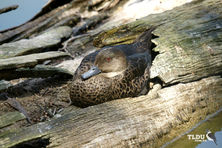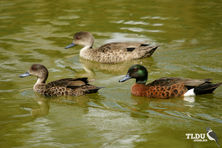
Shoppers Feedback:
Jan 17, 2017
Hello Ros,
I have now paid the invoice, but I would like to write to you just to say a big THANK YOU for getting me the Penguin!
The ChatterMate Penguin became a nice memory for me when I was in New Zealand, and I am so greatful to you for arranging so that I could have it! :-)
Thank you so much!!!!!!!!!!!
Regards,
Malin
Hi Ros,
Many thanks for your very kind email. I really appreciate your prompt reply!
I appreciate your advice regarding the decorations and customs. These are a gift for my daughter’s exchange student family so when she returns home on the weekend I will show her and see if she loves them as much as I do!
Thanks so very much again - I am truly grateful for your kind assistance.
Kind Regards
Bernadette
Ros,
Thanks again for the great customer service. It's a refreshing change!
Best regards,
Trevor
Hey Roz,
Thank you for your emails. Just loved my first order. The cute little Aussie bush critters are going to be used for an office Christmas decoration. My colleagues also liked them and talked about making an order to your site. I'll send you a photo when completed.
I'll be ordering more to send to my daughter's host family in America.
Fabulous service from you.
Kind regards,
Michelle
Thankyou. Order arrived today. One very happy grandson with his new beastly binoculars.
Regards,
Irene
- Home
- Wild Wonders
- Shop
- Aromas of Australia
- Australian Made
- Books
- Book Marks
- Christmas Decoration Sale
- Christmas Decorations
- Clocks
- Drink Holders
- Garden & Outdoor
- Gift Wrapping & Cards
- Home & Giftware
- Jewellery
- Keyrings
- New Products
- Pencils & Pen Holders
- Photo Frames
- Plush Toys
- Plush with Sound
- Sheepskin Rugs
- Stationery
- Stone Carvings
- Toys & Games
- Travel Goods
- Wedding
- Wild Figurines
- Wildlife Safety Products
- Wind Chimes
- Wine Charms
- View All Products
- Wildlife
- Australiana
- Explore
- Contact Us
Chestnut Teal

Quick Facts
| Length: | 42 cm |
| Height: | - |
| Weight: | 650 grams |
| Colour: | - |
| Habitat: | Wetlands and estuaries in coastal areas. Can be found on open freshwater lakes, reservoirs and sewage ponds in dry seasons. |
| Food: | Seeds and Insects with some vegetation, molluscs and crustaceans |
| Predators: | Little Ravens, Blue-tongued lizards, Purple Swamphens, Musk Ducks, Swamp Harriers and Peregrine Falcons, also foxes and cats |
| Status: | Not Present in NT. Secure in all other states and territories |
The Chestnut Teal is a small dabbling duck with a high forehead and rounded head. Males are distinctive, having a glossy green head, chestnut brown neck, breast and flanks, dark brown upper body and wings, and a black undertail with contrasting white patch. Females are mottled dark brown and grey, with a pale throat streaked brown and a dark eye stripe. In both sexes the eye is a deep red, the bill is blue-grey and the legs and feet are green-grey. The wings have a dark glossy green to purple speculum (panel) edged white and the underwing is brown, with white wing pits.
Female and juvenile Chestnut Teals are extremely similar to, but slightly darker than, the Grey Teal. Since the Chestnut and Grey Teals overlap in habitat, behaviour and even calls, it is quite hard to distinguish between the two species' females or young. However, the male Chestnut Teals look very different to Grey Teals, having a distinctive green head and chestnut body plumage.
The Chestnut Teal is found in south-western and south-eastern Australia. In the east, it is found from Rockhampton, Queensland to Ceduna, South Australia, being most common in New South Wales, Victoria and Tasmania. It is also a vagrant to New Guinea and Lord Howe Island.
The Chestnut Teal is found on wetlands and estuaries in coastal regions, and is one of the few ducks able to tolerate high salinity waters, although it still needs fresh water for drinking. It will also use open freshwater lakes, reservoirs and sewage ponds during dry seasons. It mainly breeds in coastal areas, needing hollow trees in water or short grasslands near water for nesting, and it will readily take to suitable nest boxes
Some movements between breeding and non-breeding areas, but many birds do not move far.
The Chestnut Teal eats seeds and insects, along with some vegetation, as well as molluscs and crustaceans in more coastal habitats. It mainly feeds at the water's edge during the rising tide, dabbling at food items being washed in. It also dabbles for food while swimming in the water, up-ends to bottom feed or takes food from the surface.
Chestnut Teals form monogamous pairs that stay together outside the breeding season. Both parents choose and defend a nest site and the males stay with the female while she incubates the eggs. The nest is usually located over water, in a down-lined tree hollow about 6 m to 10 m high. Sometimes nests are placed on the ground, among clumps of grass near water, and are little more than a scrape, lined with down. Artificial nest boxes of the right size and located in suitable habitat will also be readily used. Males do not assist with incubation but do look after the young when hatched. Sometimes 'dump-laying' occurs, where females leave their eggs in the nest of another female, which accounts for some large clutch sizes (up to 17 eggs in a nest). The young hatch ready to swim and walk within a day, and will move out with their mother onto the water straight away. Both parents defend their brood and will chase off other teal with pecks. If threatened by a predator, parents will feign injury, splash and quack in an attempt to distract it while the young dive or swim off.
Predators include: Little Ravens, which eat eggs and young; Blue-tongued Lizards, which eat eggs; Purple Swamphens and Musk Ducks, which take ducklings; Swamp Harriers and Peregrine Falcons, which take adults; and Foxes, which take eggs, young and adults.
Chestnut Teals, like most waterbirds, have suffered from wetland modifications such as drainage, increased salinity, grazing, clearing and burning. In coastal areas, their preferred estuary and inlet habitats are threatened by increased development, however their ready adoption of nest boxes is promising. In areas where hunting is permitted, they are widely hunted, but can find refuge in sanctuaries, and they represent a low proportion of the total shooting 'harvest' for south-eastern Australia. The introduced Fox is a major predator, eating eggs, young and adults.
Last Updated: Friday 6th September, 2013
BirdLife Australia - www.birdlife.org.au
BUSH e-TELEGRAPH
Signup for our monthly newsletter the "e-Telegraph"
Quick Links
Home | The Beginning | About The Land Down Under | Wild Wonders | Advertise on Wild Wonders | Christmas Decoration Sale | Christmas Tree Decorations | Drink Holders | Plush with Sound | Stone Carvings | Wildlife Wine Charms | Freebies | Australian Wildlife | Help Our Wildlife | Australiana | Photo of the Month | Explore The Land Down Under | Contact Us | Legal Notices


